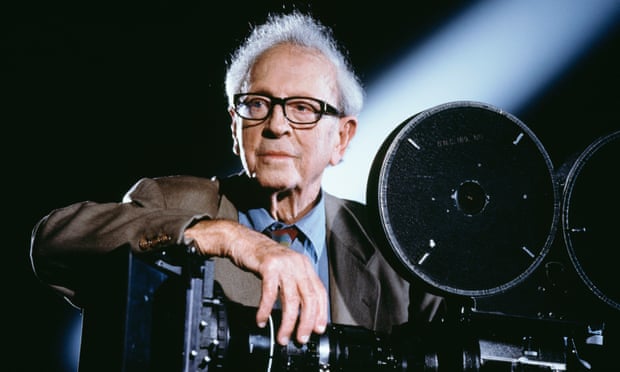
❝ Douglas Slocombe, who has died aged 103, was one of Britain’s greatest cameramen – an award-winning cinematographer noted for his high contrast shooting and a key figure in British and American film from the heyday of Ealing Studios in the 1940s and 50s onwards.
One of the greatest cameramen in the history of the genre, IMHO.
Slocombe, who was entirely self-taught, had a career spanning more than 40 years and 80 films. He was nominated for Oscars for Travels With My Aunt (1972), Julia (1977) and Raiders of the Lost Ark (1981). Bafta recognised him with awards for The Servant (1963), The Great Gatsby (1974) and Julia, nominations for Guns at Batasi (1964), The Lion in Winter (1968) and Jesus Christ Superstar (1973), and a lifetime achievement award in 1993.
❝ Born in London, Slocombe spent his childhood in Paris, where his father was a diplomatic and foreign correspondent for London newspapers, entertaining politicians and such luminaries as Ernest Hemingway and James Joyce. He graduated in mathematics from the Sorbonne, but his two preoccupations were film and journalism. When work on a French Alexander Korda production did not materialise because he lacked a work permit and his hopes of joining a Gainsborough Studios apprenticeship scheme were dashed, Slocombe ended up as a junior news editor at British United Press in London for three years, also writing (from London) a Paris newsletter under a pseudonym.
To compensate for this not terribly exciting job, he continued his childhood passion, photography, which had begun at the age of seven with a Kodak Box Brownie. He increasingly sold his pictures internationally…
In 1939 he persuaded Life to send him to Danzig (the semi-autonomous city state that became the modern Polish port of Gdańsk), which was acquiring the reputation of being the most dangerous place in Europe. On his return, Herbert Kline, who was producing a documentary to be entitled Lights Out in Europe, asked Slocombe to return to Danzig to film. It was crucial this was done before his powerful photographs of, among others, black- and brownshirts terrorising the city, were published….
I suggest you RTFA for his tales of daring in WW2…filming under Goebbels nose in one instance.
So many of his films are lifetime favorites for me: Lion in Winter, Kind Hearts and Coronets, The Lavender Hill Mob and The Man in the White Suit. During his freelance career, he did A High Wind in Jamaica, The Italian Job and the Indiana Jones trilogy. Indiana Jones and the Last Crusade (1989) was his last project.
He will be missed.
Doug left “Indiana Jones and the Last Crusade” after the studio refused to purchase the color correcting gel (filter) he needed to take the green cast of the light produced by the Italian Ianiro 12k HMIs that were going to be used to produce daylight fill for the actors in the final scenes of the movie on location in Petra (Jordan) . The resulting unnatural greenish tint in the shadows on their faces is much more evident in a theater then this clip: https://www.youtube.com/watch?v=bGN0LuEXBYY At most the total expense for the gel might have been a couple thousand bucks but at the end of the production the electrical department’s budget was tapped out according to the front office – Doug pointed out they had money for replacing him if he got sick (he was 75 at the time) but they refused to use any of it, saying the film would be ‘good enough’. And with that Doug quit the Biz, which is to say what film making had been turned into.
“A favorite of director Steven Spielberg, he was responsible for the acclaimed (and technically complex) photography on Spielberg’s blockbuster “Close Encounters of the Third Kind” (1977), and while shooting “Raiders of the Lost Ark” (1981) he was noted for never having used a light meter, an almost indispensable tool for most cinematographers.” ‘Dougie’ had what’s known in the trade as ‘a good eye’ regards gauging exposure and composition but by the end of his career he was almost totally blind in his right eye. http://www.imdb.com/name/nm0005878/board/nest/41291259?d=133353750#133353750